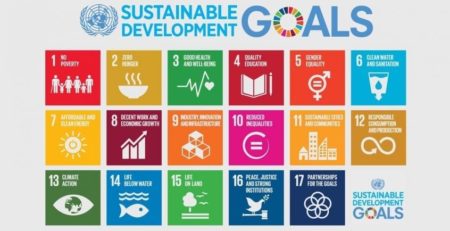ESG Markets and What It Really Means for the Investors
Opinions expressed by Transformation contributors are their own.
The COVID-19 crisis has been disruptive to business around the world and this trend is likely to continue for several months, if not longer. This has forced companies and investors to consider black swan risks and other non-financial risks while also focusing on a long-term strategy to address business continuity and resilience.
The current pandemic, as well as potential threats that climate change may bring, have to be incorporated into risk assessment while making investment / business decisions and constructing portfolios. Decisions taken in this crisis will have long-term consequences on a company’s long-term viability, and in the macro sense, the economy and people’s well-being.
Several factors will impact the world in coming years:
- climate change cataclysms
- growing population
- political instability
- refugee movements
- supply chain disruptions
- financial instability
As a result, the global community needs to rapidly pivot towards responsible investing. This approach is likely to fuel an ESG investing trend.
ESG assets exceeded $30 trillion in 2018 according to Global Sustainable Investment Alliance report, a 34% increase since 2016. Within next two decades this number could go up to $50 trillion. ESG investing has been a niche focus for quite some time and generally not accessible to a wider group of retail investors. This tendency has been evolved over the last several years - despite higher fees / expense ratios, ESG funds have still outperformed broader net returns vs. passive broad index funds (e.g. S&P 500).
More funds, endowments, asset managers and business owners are calling for action—as a result, for example, 86% of S&P 500 companies disclosed ESG information in 2018, up from 20% in 2011. The largest investors in the world realize the importance of sustainability. In a recent letter to the shareholders, Larry Fink—CEO of BlackRock, the largest asset manager—announced the company was placing sustainability at the center of their investment strategy going forward.
Certain indices (notably, the Morningstar Sustainability Rating) shows steadily increasing interest in ESG funds; at its beginnings in 2016, there were 165 funds available to the US investors that had a sustainable investing mandate. At the end of 2019, the number was close to 300 and growing. Both the number of funds with an ESG mandate, as well as the notional amount of capital flowing to those funds, have steadily increased:
The growth in ESG investing has continued for several years ago and got fueled by the fact that during the last three to five years sustainable funds have been outperforming its conventional peers. According to Morningrstar, 35% of ESG funds were found in the top quartile of performance in 2019 by asset class. Equities in particular outperformed with 41% of ESG funds in the top quartile of returns. 1Q 2020 brought the COVID-19 crisis and has been utterly devastating for the general economy, as well as business and investment funds. ESG funds was no exception. Despite the crisis, ESG funds still performed better in volatile markets according to Morningstar, with 44% ranking in the first quartile. While markets have largely recovered by now in June 2020, it is reassuring to know an ESG portfolio weathered the storm better.
Factors Contributing to ESG Out-Performance
There are several factors contributing to ESG out-performance, with the major impact laying in its sector weightings. First, sustainable funds under represent the energy sector compared to conventional funds, which has been historically volatile due to geopolitical circumstances.
Second, they are often over weighed in the technology sector that has been less impacted by pandemic. In fact, the tech sector has even sometimes benefited from macro trends and the new work-from-home world. In addition, the social and governance aspects of ESG investing may mean a focus on better management, taking of environmental considerations into strategic business and decisions, and supporting of resilient governance structures and stress tests on a frequent basis. These types of companies are likely to have a margin of safety and competitive advantage in economic downturns. Trends like telecommuting, distance learning, telemedicine, renewable energy solutions, sustainable building methods are accelerating and are a focus for ESG investing that should continue to drive positive returns.
Putting a Hold on Greenwashing with ESG Guidelines
Meanwhile, when it comes to the ESG nomenclature, the accuracy of the statistical data still has a lot to be desired. Social and governance components remain vague and leave room for “greenwashing”, tactics used by companies to misrepresent the nature of business, operation processes, and environmental impact to attract sustainability driven investors. ESG cannot just be a marketing tool to attract capital; we need defined rules to measure, analyze and comply in order to create consistency and understand fundamental long-term efficiencies.
The EU is currently implementing the guidelines to define sustainable investments. Although these rules are not to be implemented until 2021, this is the first step to curb greenwashing. The US needs to keep up with the ESG compliance and reporting in both debt and equity markets—otherwise the market and societal demand creates wrong incentives for asset managers to include the ESG representation where there’s none. More so, investment professionals, analysts and leaders making decisions need to take ESG investing one step further and focus on impact investing - a more focused type of capital investing with a direct and measurable environmental affect.
The world is becoming more aware of the environmental and social challenges of business. The next decade is likely to bring a new wave of shareholder-driven accountability in US and international corporations. We are already seeing positive trends, as discussed above, but capital flows towards impact investing per se are still minuscule.
Is impact analysis and integration a nice-to-have or a must-have? It is becoming a widely recognized truth that, in this environment, an impact investing focus highlights the companies poised to win in a world that is evolving towards a more responsible population—one that takes more considerate action with their economic activity. It is a must-have component and more so; sustainability will help build resilience in downturns in a long run as well as secure long-term potential financial value and growth, which is a definite win for investor. Let’s hope the 2020 change will accelerate the understanding that the world needs to take action – that would be a definite win for society.





Comment (1)
[…] for a company’s operations that socially conscious investors use to screen potential investments. ESG-minded business practices have gained more traction and investment firms are increasingly tracking their performance and provide different options for […]